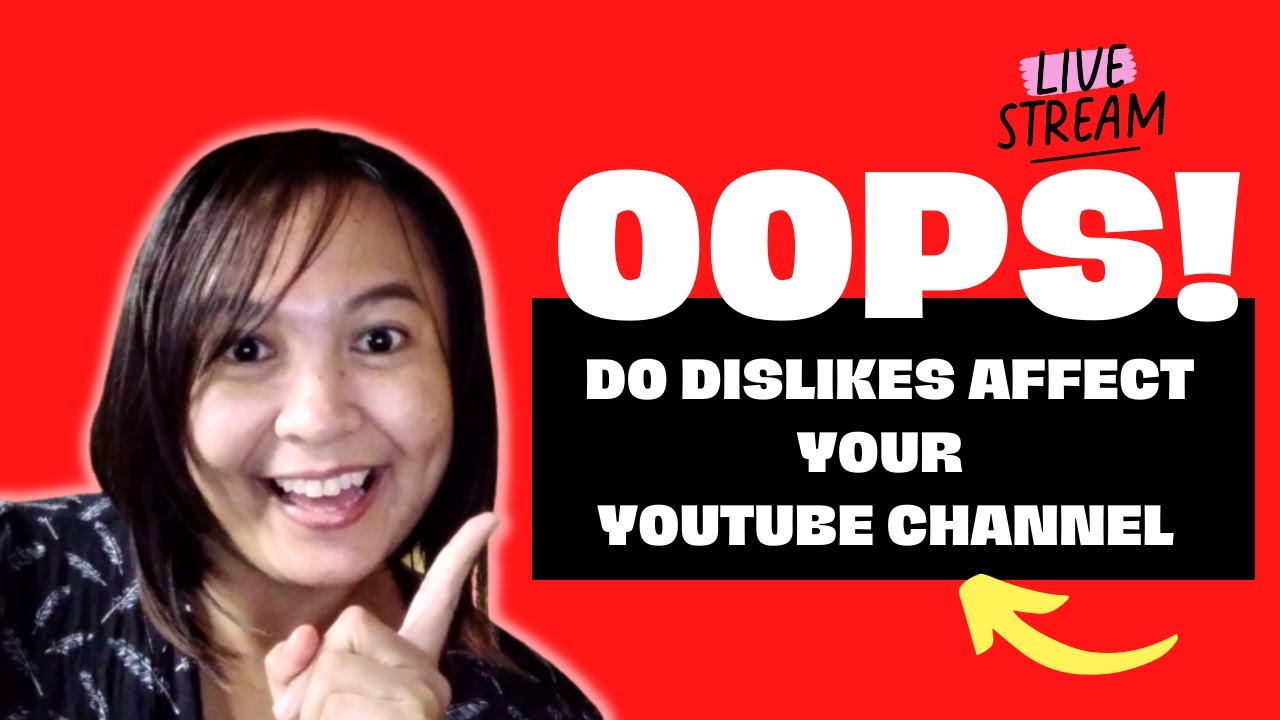Ah, YouTube! The land of endless videos, tutorials, and cat compilations. One of the most talked-about features on this platform is the dislike button. While you may think it’s just a way to express dissatisfaction with a video, its implications run deeper than that. In this blog post, we’ll dive into what the dislike feature really means for both viewers and content creators. Spoiler alert: It’s more influential than you might think!
The Role of Dislikes in Viewer Engagement

Dislikes on YouTube play a significant role in shaping viewer engagement and content visibility. Here’s how:
- Viewer Feedback: Dislikes serve as a powerful form of feedback. When viewers express their discontent, it sends a message to creators about what works and what doesn’t. For example, if a tutorial video receives numerous dislikes, it could indicate that the instructions were unclear or the content was less engaging.
- Content Quality Signal: YouTube’s algorithm considers the like-to-dislike ratio as an indicator of content quality. A video with a high number of dislikes might be deprioritized in searches and recommendations. This can significantly affect a creator’s reach and growth.
- Viewer Decision-Making: Before hitting play, many viewers glance at the like and dislike counts. A video with a lot of dislikes might deter them from watching, while a positive ratio can encourage clicks. For instance, if you’re browsing for a recipe and see a dish with 20 dislikes to every like, you might think twice about trying it out.
Interestingly, dislikes can also foster a sense of community among viewers. When a video gets an overwhelming number of dislikes, it often sparks conversations in the comments section. Viewers share their opinions and experiences, creating a dialogue that wouldn’t exist if the dislike button wasn’t there. It can transform a solitary viewing experience into a collective one.
However, the dislike feature isn’t without its controversies. Some argue that it encourages negativity and can lead to targeted harassment, especially against smaller creators. For instance, if a video goes viral for the wrong reasons, it might face a wave of dislikes that can feel disheartening to the creator, potentially discouraging them from making more content.
In response to these concerns, YouTube has made changes over the years. While the dislike button remains, there have been discussions about hiding the dislike count from public view to mitigate harassment. Still, the ability to express dislike remains essential for many viewers who want to ensure that quality content rises to the top.
In conclusion, dislikes on YouTube serve a multifaceted role in viewer engagement. They provide crucial feedback, influence content visibility, and even foster community discussions. Whether you find yourself clicking that dislike button or not, know that it holds weight in the vast ecosystem of YouTube!
Also Read This: How Much Do YouTubers Make for 1 Million Views? Earnings Breakdown
3. How Dislikes Impact Content Creators
When you hit the dislike button on a YouTube video, it might seem like a small action, but its ripple effects can be significant for content creators. Many creators invest countless hours into their videos, pouring their creativity and passion into each piece. So, how does receiving dislikes affect them?
1. Algorithm Influence: YouTube's algorithm takes various factors into account for promoting content. Dislikes can lead to negative engagement metrics, which might hinder a video’s visibility. If a video garners more dislikes than likes, YouTube may deem it less favorable and restrict its reach, impacting the creator’s potential audience.
2. Emotional Toll: For many creators, receiving dislikes can feel personal. It’s easy to take feedback to heart, especially when you’ve invested so much into your work. Consistent negative feedback can lead to discouragement, affecting a creator's motivation and future content quality.
3. Community Feedback: Dislikes, in some ways, serve as a form of feedback. They can guide creators on what their audience appreciates or despises. For example, a cooking channel might receive dislikes on a recipe video, signaling that viewers prefer different flavors or styles. However, this feedback can only be constructive if viewed positively.
4. Content Adjustment: Creators often take dislikes as a cue to adjust their content. They may pivot their style, topics, or presentation based on viewer reactions. While this can lead to improved content, it might also mean losing the essence of what initially attracted their audience.
Ultimately, while dislikes can feel discouraging, they also provide data that can help creators grow. Understanding the nuances behind viewer reactions can empower creators to refine their approach, ensuring they remain connected to their audience.
Also Read This: Why Are YouTube Ads So Loud and How to Control Volume
4. Analyzing Viewer Behavior: Why Do People Dislike Videos?
Now that we’ve discussed the impact of dislikes on creators, let’s delve into the reasons viewers hit that infamous dislike button. Understanding viewer behavior can shed light on what drives engagement on YouTube.
1. Content Mismatch: One of the most common reasons for dislikes is a disconnect between expectations and reality. Viewers might click on a video based on its title or thumbnail but find the content doesn't deliver. For example, a video promising quick tips for a DIY project that turns out to be lengthy and rambling could lead to disgruntled viewers.
2. Quality Issues: Dislikes can stem from perceived quality problems. If a video has poor audio, blurry visuals, or lacks clear information, viewers may express their dissatisfaction through dislikes. This behavior often indicates a desire for higher production values or clearer communication.
3. Content Type: Not every viewer enjoys the same type of content. For instance, if a channel known for light-hearted vlogs suddenly shifts to serious commentary, some fans may not appreciate the change. Dislikes can signal a dislike for a genre shift or a new format that doesn’t resonate with the audience.
4. Emotional Reactions: Sometimes, viewers dislike videos simply out of emotion. If a topic is sensitive or controversial, it can incite strong feelings. A viewer might dislike a video not because of its quality but due to personal beliefs or emotional responses provoked by the subject matter.
In essence, dislikes are a complex tapestry of viewer expectations, preferences, and reactions. By analyzing this behavior, creators can better understand their audience, fostering a more informed approach to content creation. A dislike, while seemingly negative, can serve as a stepping stone towards growth and improvement in the ever-evolving landscape of YouTube.
Also Read This: How Much Money Is 8 Million Views on YouTube? Revenue Potential
5. The Effect of Dislikes on YouTube Algorithms
When you hit that dislike button on a YouTube video, it’s not just a simple tap; it sends ripples through the platform's complex algorithms. YouTube’s algorithm is designed to prioritize engagement, and while likes and shares are typically seen as a positive sign, dislikes can create a different narrative.
So, what exactly happens when a video accumulates dislikes? Here are some key points to consider:
- Engagement Metrics: YouTube measures a video’s performance based on various engagement metrics, including likes, dislikes, comments, and watch time. A high number of dislikes can signal to the algorithm that viewers are not enjoying the content, which might lead to lower visibility.
- Recommendations: If a video receives more dislikes than likes, it may be less likely to show up in the recommended feed. This can significantly impact a creator’s reach, especially for newer channels trying to gain traction.
- Viewer Retention: Dislikes can affect how long viewers stay on a video. If many viewers dislike what they see, they might leave quickly. This drop in retention can further harm a video's ranking in search results and recommendations.
Interestingly, dislikes can also serve as a form of feedback. Creators often use this data to refine their content. A high dislike rate might prompt a creator to adjust their style or topic to better match their audience's preferences. It’s a double-edged sword; while dislikes can hurt visibility, they also provide insights into what isn’t working.
Ultimately, the effect of dislikes on YouTube algorithms is multifaceted. While it can lead to diminished reach for a video, it also offers valuable feedback that can lead to growth and improvement. Content creators should pay attention to these metrics—not just for likes, but for dislikes too!
6. Case Studies: Dislikes and Their Consequences
To truly understand the impact of dislikes on content creators, let's delve into some real-world examples. These case studies illustrate how dislikes can either hinder or help a creator's journey.
Case Study 1: A Controversial Video
Consider a well-known YouTuber who released a video discussing a hot-button topic. The video garnered thousands of views, but also significantly more dislikes than usual. As a result:
- The video was promptly flagged by the algorithm, leading to reduced visibility in recommendation feeds.
- Despite the initial attention, subsequent videos from this creator saw a drop in views, suggesting that the negative feedback affected their audience’s trust.
Case Study 2: The Learning Experience
On the flip side, another creator posted a tutorial video that received a surprising number of dislikes. Instead of ignoring the feedback, the creator acknowledged it in their next upload:
- They addressed common complaints directly, leading to a more engaged audience.
- In the following weeks, their channel experienced a surge in subscriptions as viewers appreciated their willingness to learn from criticism.
These examples show that dislikes can have varied consequences. While they can initially seem discouraging, they often provide opportunities for growth and adaptation.
In conclusion, understanding the dynamics of dislikes on YouTube is essential for creators. Whether it leads to constructive changes or serves as a warning signal, it’s crucial to embrace both likes and dislikes as part of the creative journey.
 admin
admin








